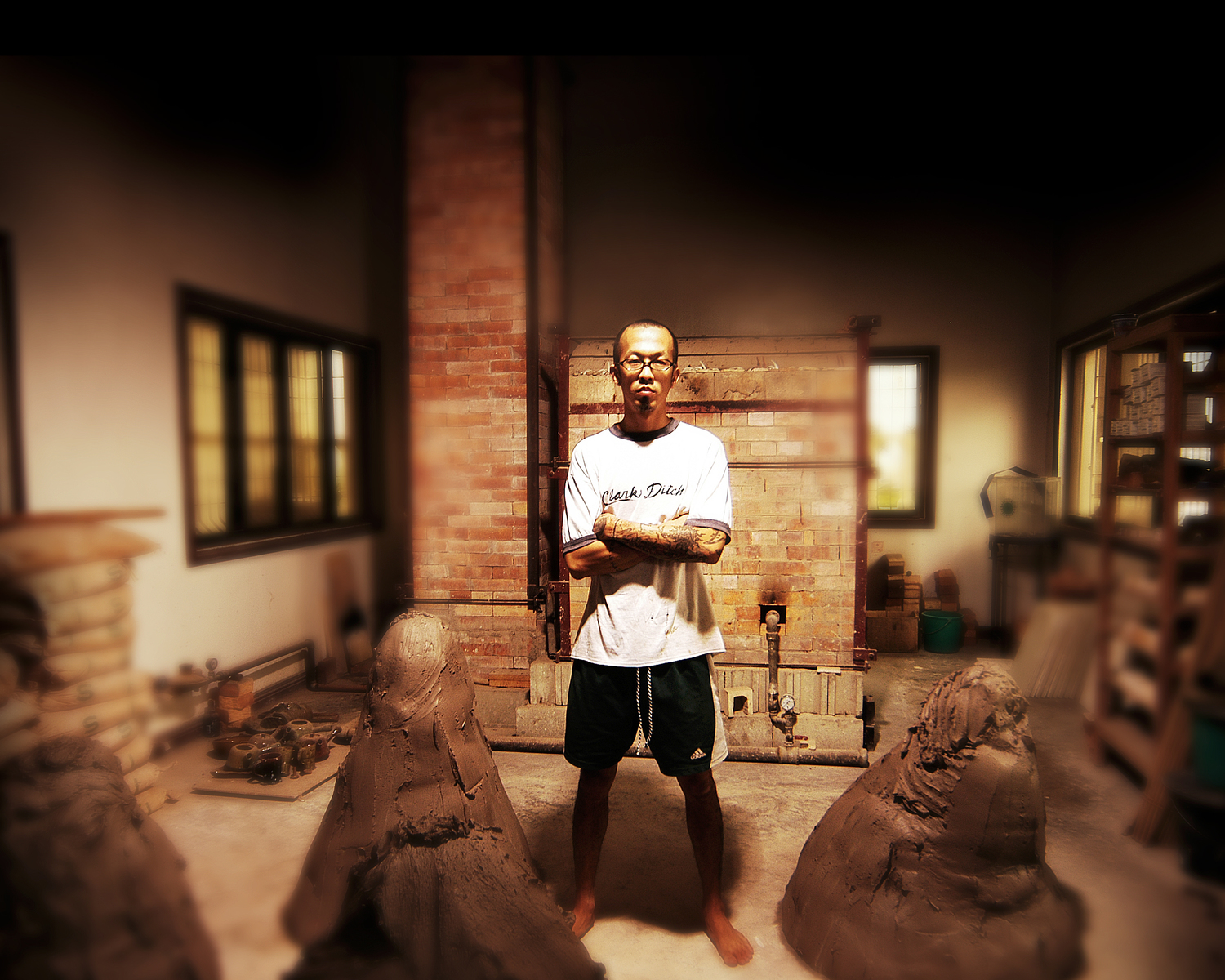"Dinnerware for those with a taste for the unusual" Philippine Enquirer July 28, 2002 by Joy Rojas
July 30 in Gallery 139 at the Artwalk, 4/L, Building A, SM Megamall. Here Mendoza is tinkering with his craft and has moved on from vases to more functional items.
These are utensils guaranteed to turn dining into an exotic experience. Coming face to face with them on the table may enhance your appreciation of the visual appeal of food, or even whet your appetite. But a contemplation of their worth and aesthetics may distract your experience and cuisine.
There are still vases here, and they do function as vases, but they are rather more sculptural than merely practical. Incised, impressed or dented, some have classic forms (conical, spherical, pyramidical), while others are oddly shaped, with protuberances or peacock spots on the surface, snakelike spirals around the body, oval ring on the face, uneven rim.
One or two of these as a conversation piece on the table can set off the dinner, even without the flowers. A few would be jugs or pitchers such as an anagama fired on of slate-green with a prominently protruding lip, the upper half of the conical body giving the illusion of leaning.
The exhibit, however, consists mostly of bowls of various sizes and functions. They can serve as individual soup bowls, tureens, teacups, canisters, coffee mugs, drinking glasses, even dim sum trays. The largest of these, in tan-blue matt glaze, of greenish-gray with cerulean and brown spots, can serve as a fruit tray.
A set of 10 small bowls in shino glaze , of whitish gray-brown, slightly elevated on unglazed bases and adorned with horizontal ribbing, could be teacups. There is a similar set of eight, but in khaki glaze, of tobacco-brown with blue traces.
The rest are variants- smoothe-surfaced or highly textured, dull or shiny, with relief or ribbing, drips or washes, of greenish tinge, celadon, olive-green, reddish brow, or half-maroon and half-black, ink-blue outside and brown inside, with ink-blue spots, rust-colored speckles, or a concentric bottom of gray and azure, like the nacre of a shellfish.
There are several porcelain bowls in tan-blue matt glaze. There is a set of three, shiny ones of yellowish brown-green. Another is a set of five, azure with whitish spots. The loveliest of these porcelain pieces is a blue one with an uneven rim and concentric bottom with spots of violet, like mother-of-pearl.
Four rectangle plates are scattered amid the bowls: in tenmoku glaze, colored maroon with washes of black; in khaki glaze, with ink-blue washes; in tan-blue matt glaze; and in shino glaze, a whitish gray-brown piece with raised edges. Each looks like a sushi or sashimi dish. But it may also serve as a salver for nuts, chips, cookies, candies, or even as a sauceboat.
There are of course, some round plates: a set of three in tan-blue matt glaze, elevated on bases; and a set fo five in shino glaze, of whitish gray-brown.
We'd like to think these are dinner sets, that is, if one's idea of fine dining is eating off the bivalve of a giant clam.
